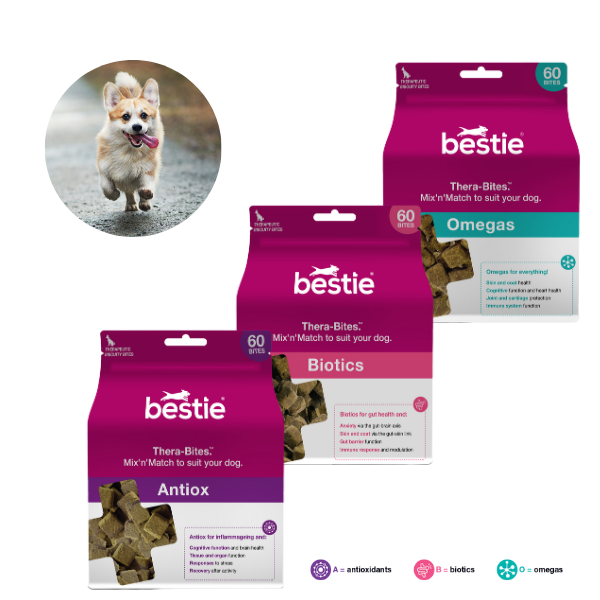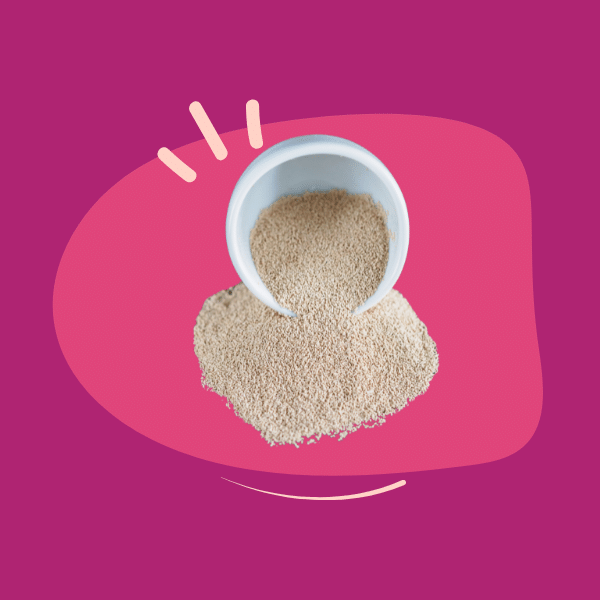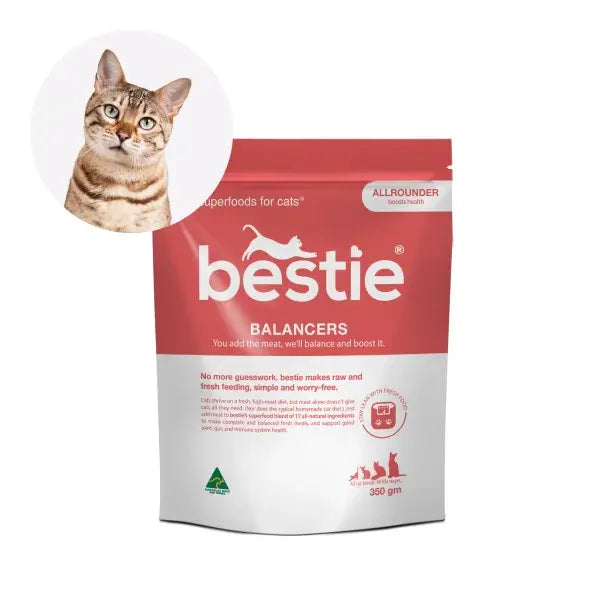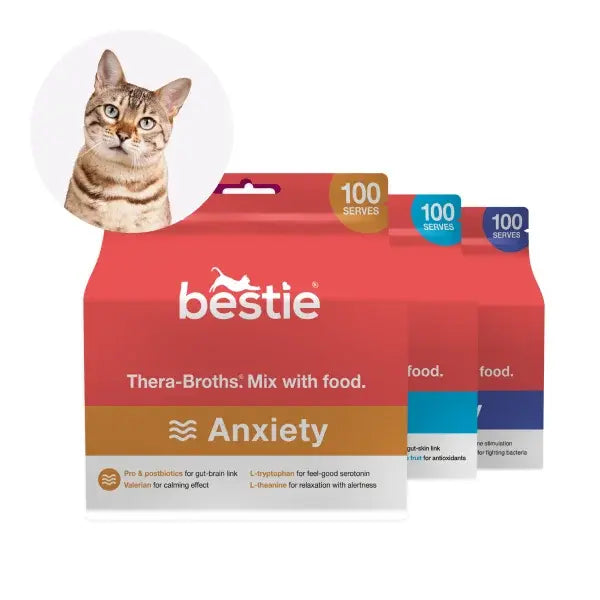Dietary proteins are a macronutrient necessary in your pet’s diet, but what is it they do?
Amino acids are produced by breaking down proteins. Some are essential for life, so we call them essential amino acids, and they’re needed for various metabolic processes in the body. This means that deficiencies in essential amino acids can lead to disease development and affect your pet’s health.
Our first association with “protein” is usually meat, but don’t forget that there are other proteins that can be sourced from plants and insects! Proteins from animal sources are highly digestible proteins packed with essential amino acids. But what about plant proteins?
Are these proteins equal? Better? Worse?
But first, how much protein does your pet need?
Organisations like the Association of American Feed Control Officials (AAFCO) and the European Pet Food Industry Federation (FEDIAF) have set the global standard for the pet food industry's nutrient requirements to standardise pet health and nutrition. They define minimum and some maximum nutrient requirements for dog and cat foods.
Based on these nutrient standards, the percentage of protein your pet needs in their diet varies depending on a few parameters. It’s hard to say that your dog needs exactly “x” amount of dietary proteins. This can change based on breed, activity level, and life stages.
Based on AAFCO guidelines, adult dogs require a minimum of 18% crude dietary proteins. But this value can change. For example, puppies experience rapid growth up to one year of age, and during this period, the body has a higher demand for dietary proteins and calories to accommodate growth. The same goes for pregnant female dogs that require more nutrients to support pregnancy. In these cases, your pet needs a minimum of 22.5% crude protein.

What happens if your pet’s protein intake isn’t balanced?
There are two main ways of disrupting dietary protein balance: protein deficiency or excess.
Dietary Protein Deficiency
We’ve already mentioned how crucial dietary proteins are to providing essential amino acids. They play a significant role in muscle growth/recovery, overall development, energy production, and many vital bodily functions.
When protein intake is deficient, lean body mass (muscle) is gradually broken down to compensate for dietary protein deficiencies (Laflamme, 2008). Because muscle is made up of proteins, its breakdown releases several different molecules into the bloodstream that can cause problems for your pet. The main issue is ammonia and urea, which are the nitrogenous components that are part of muscle tissue.
Under normal conditions, the liver metabolises ammonia (which is toxic) to a less poisonous version—urea. Different organ systems take this urea and excrete it, but the kidneys mainly handle this.
When dietary protein deficiency persists, and muscle wasting is severe, the kidneys have difficulty excreting accumulated urea, leading to a condition called uremia. This uremic state typically begins as acute kidney injury (AKI) and can cause systemic organ damage. If dietary protein isn’t corrected, this leads to further kidney damage and dysfunction of distant organs, including the lungs, heart, brain, liver, intestines, and compromises the immune system (Lee et al., 2018).
Figure 1. The impact of acute kidney injury (AKI) on distant organs.
Acute kidney injury (AKI) causes hemodynamic, humoral, and immunologic changes, leading to dysfunction of distant organs, including lung, heart, brain, liver, intestine and immune system. Abbreviations: AKI, acute kidney injury.
Excessive Dietary Protein
Let’s switch our perspective to what can happen in cases of excess dietary proteins.
Again, it all comes back to the kidneys. Overall, increased protein consumption has been found to lead to the production of metabolites associated with kidney disease and inflammation. This has to do with the basic metabolism of proteins since their digestion will always increase urea levels in the bloodstream (Ephraim et al., 2020). Most pets can handle elevated levels of dietary proteins and urea. However, those with chronic kidney disorders can’t remove this waste material, leading to increased blood urea levels.
But that’s just one side of a high-protein diet. A study by Hill’s Pet Nutrition found that when healthy dogs were fed highly digestible protein, there was an increase in concentrations of specific uremic toxins originating from gut microbes. Microbial fermentation of tryptophan (an amino acid) in the colon produces indole sulphates and p-cresol as byproducts, but these aren’t just excreted in the feces. Instead, a significant portion is absorbed through the digestive system, enters the bloodstream, and has been implicated in kidney disease and inflammation (Ephraim et al., 2020).
For senior pets who often have reduced kidney function, a diet with limited proteins and phosphorus is recommended to ease the kidney workload.
Figure 2. Connecting microbial toxins with kidney disease.
The intestinal microbiota produces several microbial toxins that extensively accumulate in kidney disease, likely due to increased toxin-producing bacterial species and decreased renal clearance.
What does protein digestibility mean?
To add another layer to our tale of proteins, the amount of protein your pet needs can change depending on the digestibility of the protein. Not all proteins are equally digestible and can leave your pet’s intestines only partially digested (Gaudichon & Calvez, 2021).
Based on AAFCO’s calculations, apparent digestibility for crude protein should be at least 80%, meaning that 80% of protein should be digested by the time the food passes through your pet’s digestive system. The remaining 20% will end up in their poo, undigested.
A lot of the research around digestibility uses Apparent Total Tract Digestibility (ATTD) to measure how much protein enters the mouth compared to how much protein comes out in the poop (Duque-Saldarriaga et al., 2020). This isn’t a perfect model because part of the proteins digested by the gut microbiome is converted to gas and won’t be found in the faeces.
This method also doesn’t consider the proteins made and secreted by your pet’s digestive system (endogenous proteins). All those digestive enzymes that are needed to break down food, old cells that are being replaced, and the gut bacteria that naturally turnover are all sources of protein that are released into the poop (Golder et al., 2020). Without accounting for these, the digestibility of foods would be overestimated!
True Protein Digestibility – Plant vs Animal Proteins
To get a better pricture, a study by Hill’s Pet Nutrition also looked at True Protein Digestibility. It is calculated as follows:
Back to the study! Over 110 months (that’s over nine years!), the researchers evaluated how plant-based proteins affect true protein digestibility. They took conventional animal-based pet foods and increased the proportion of plant protein sources (e.g. protein from soybean, corn, rice, etc.) in both cat and dog diets (Golder et al., 2020).
But, why is this important?
This challenges how we view digestibility and the idea that animals rely on animal protein in their diets. When the researchers increased the proportion of plant proteins in dog food, they found digestibility was equal to diets solely based on animal proteins. There was no loss in digestibility.
Further, cats are known to be strict carnivores, but their data suggests that plant-based diets actually enhance digestibility in cats!
Protein digestibility increased as more plant-based proteins were supplemented into these diets.

Figure 3. The relationship between plant protein in the cat's diet and protein digestibility.
The study suggested that plant-based proteins are equally digestible for our pets, if not enhanced, compared to animal-based proteins.
Digestibility vs Bioavailability
Before we finish with digestibility of proteins, we should also look at another term that you've probably come across: bioavailability. The two are definitely related, but not interchangeable.
A food’s digestibility is the collective proportion of all nutrients in a food that is available to the dog for absorption from the intestine into the bloodstream. Nutrient bioavailability is the proportion of the absorbed nutrients that are carried to target tissues and are available for use by the body. The key ones we're looking at are amino acids, because the protein is basically a vehicle for those essential amino acids, as we talked about earlier.
A highly digestible food provides a higher proportion of absorbed nutrients than a less digestible food, so digestibility provides one good measure of a food’s nutritional value and quality. For a deeper dive into measures of amino acid availability, read more here.
Rotate some plant proteins into the diet!
All of this should make the case for good quality protein in the diet - and plant based can definitely fit the bill here. A flexitarian diet for your dog, incorporating some plant proteins, like our No-Meat Mincey Dinners and No-Meat Chunky Dinners, through the week, can help with this.
However, whether your pet eats an animal or plant-based protein diet, their daily protein intake must be balanced. Sometimes, your pet might need more proteins, while other times, we have to limit the amount of protein in their diet.This comes back to providing your pet with a complete and balanced diet that fits their specific life stage.
Writer: Ash Sadri
Ash is a Canadian veterinary student studying in Croatia. Before deciding to become a vet, Ash completed his Masters degree at the University Of Western Ontario where he specialised in cancer stem cells research. Since then, he’s been working as a veterinary technician and has special interests in animal nutrition and surgical procedures!
References
Duque-Saldarriaga, J. C., Posada-Ochoa, S. L., Agudelo-Trujillo, J. H., & Gómez-Osorio, L. M. (2020). A comparison of two methods to assess apparent total tract digestibility of nutrients in dogs. Arch Anim Nutr, 74(2), 138-149. https://doi.org/10.1080/1745039X.2019.1698899
Ephraim, E., Cochrane, C. Y., & Jewell, D. E. (2020). Varying Protein Levels Influence Metabolomics and the Gut Microbiome in Healthy Adult Dogs. Toxins (Basel), 12(8). https://doi.org/10.3390/toxins12080517
Gaudichon, C., & Calvez, J. (2021). Determinants of amino acid bioavailability from ingested protein in relation to gut health. Curr Opin Clin Nutr Metab Care, 24(1), 55-61. https://doi.org/10.1097/MCO.0000000000000708
Golder, C., Weemhoff, J. L., & Jewell, D. E. (2020). Cats Have Increased Protein Digestibility as Compared to Dogs and Improve Their Ability to Absorb Protein as Dietary Protein Intake Shifts from Animal to Plant Sources. Animals (Basel), 10(3). https://doi.org/10.3390/ani10030541
Laflamme, D. P. (2008). Pet food safety: dietary protein. Top Companion Anim Med, 23(3), 154-157. https://doi.org/10.1053/j.tcam.2008.04.009
Lee, S. A., Cozzi, M., Bush, E. L., & Rabb, H. (2018). Distant Organ Dysfunction in Acute Kidney Injury: A Review. Am J Kidney Dis, 72(6), 846-856. https://doi.org/10.1053/j.ajkd.2018.03.028




















